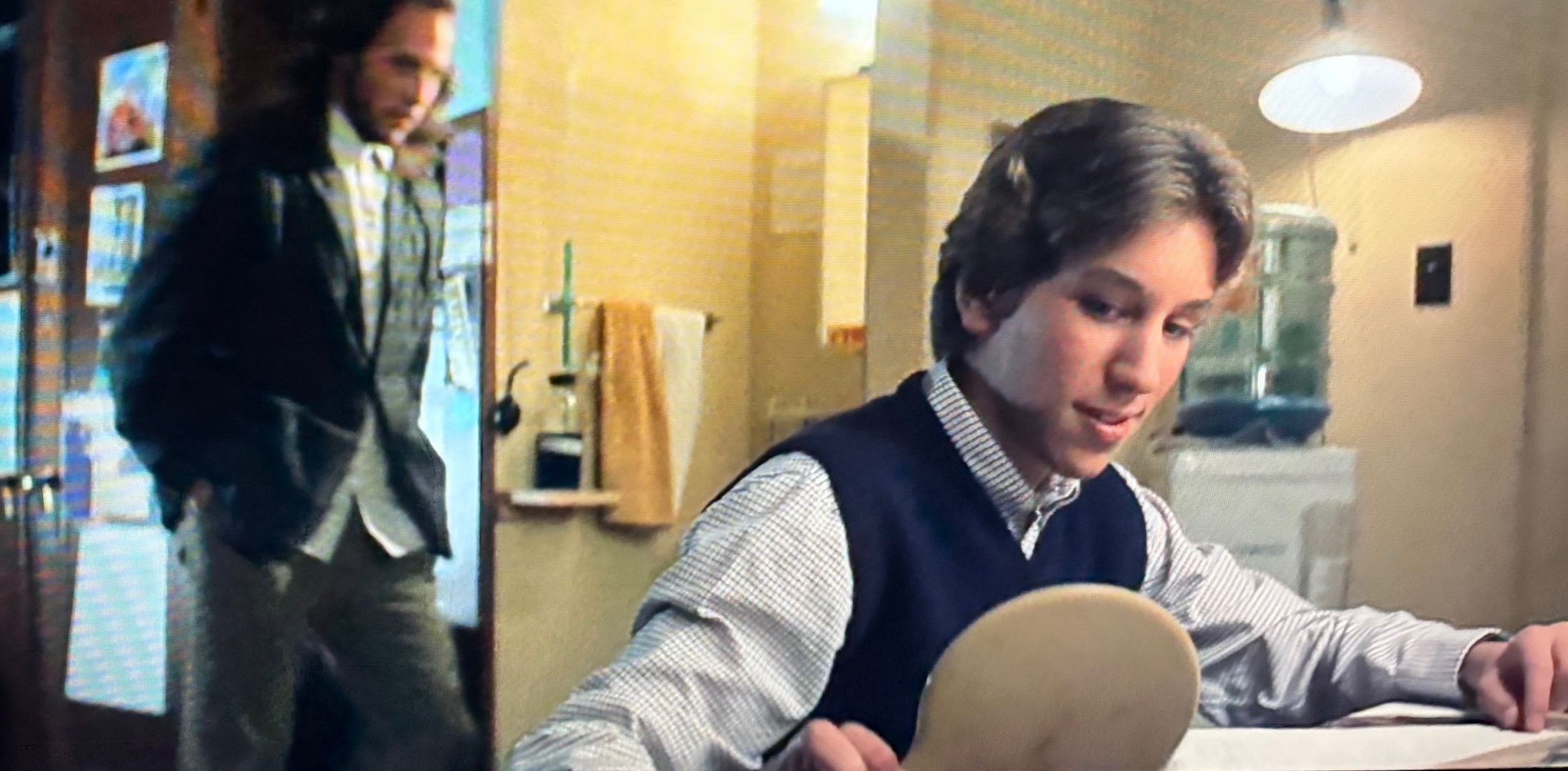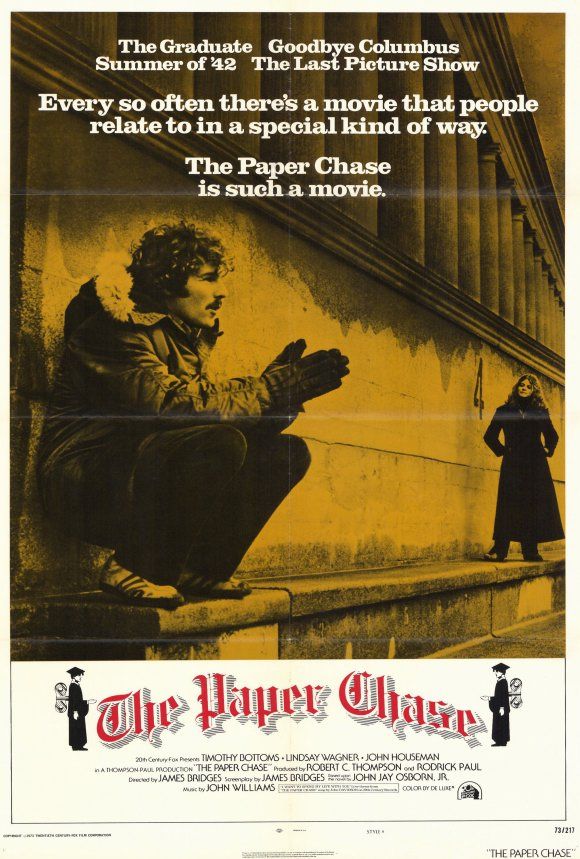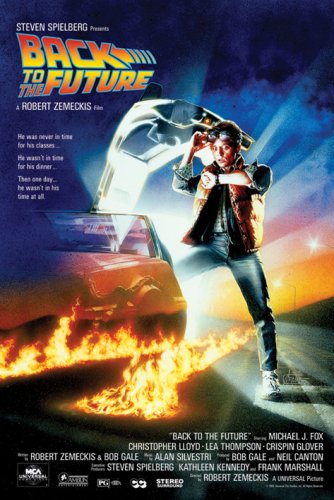‘Real Genius’ gives ‘popcorn movie’ a bad name
“Real Genius” might be a warning. Either about not building weapons that can destroy millions of people, or about not exploiting teenagers into building those weapons.
It’s best as a warning about what too much slapstick can do to a potentially decent movie.
“I recognize students like this from my own undergraduate days,” writes Roger Ebert, which is curious, because the kids in “Real Genius” are basically the X-Men, able to squeeze automobiles or skating rinks into their dorms of constant mayhem when not beaming lasers through brick walls. These kids are so productive, we have to wonder why they even need to be here.
Ebert is really talking about the quirks. The fact that one of these young geniuses acts like a hermit, or that another talks incessantly and never sleeps, or that another wears robes and fuzzy slippers around campus. Or that one of them, a 15-year-old suddenly finding himself living among these weirdos, wants to go home to his mother. It may be entertaining at this level. The thing is, most such personalities at college haven’t won the gene pool lottery.
“Real Genius” is not funny enough. It’s not sexy enough. PG-grade sight gags, especially at the ending, are just one problem. The biggest is the black hole where a protagonist is supposed to be. We are led to believe it is Gabe Jarret’s 15-year-old Mitch. That should be a typical coming-of-age tale. Shy boy who learns to connect on the right level with girls. Except the marketers, who probably noticed Mitch’s bewilderment the entire movie, didn’t get the memo and plastered not Mitch but Val Kilmer’s Chris Knight all over the advertising. Chris (who oddly shares the name of the real-life “Brady Bunch” star) is the much-ballyhooed upperclassman who is old enough to make all the barely-PG sexual jokes the script requires, albeit with a roving accent. Chris is hypersonically smart. But he’s so clueless that after several years, he still doesn’t realize he’s been taken for a ride by the devious Professor Jerry Hathaway, who’s either a fraud, or a onetime Chris Knight who succumbed to the dark side of high-level physics.
Were it a little more down to earth, “Real Genius” could rival its cousin, “Risky Business,” for provocative teen drama. In that movie, Joel is facing a problem, and as he gets swept up into an adventure that figures to make things worse, he slips into antihero mode and converts the adventure into a significant credential. The excitement is, he’s running something that’s successful and dangerous while his pals are constructing science contest entries. But neither Jarret, nor Val Kilmer, is Tom Cruise. The most exciting thing the kids in “Real Genius” do is bug someone’s braces, so that the character believes he’s hearing from a higher authority (as also happens in “Back to the Future,”) one of the movie’s cringeworthy low points.
There are statements made in “Real Genius.” We don’t know by who. It’s produced by Brian Grazer, directed by Martha Coolidge, and the credited writers are Neal Israel, Pat Proft and PJ Torokvei. Paul Attanasio of The Washington Post in 1985 says “the script was extensively rewritten, first by Lowell Ganz and Babaloo Mandel (‘Splash’), later by director Martha Coolidge and Peter Torokvei.” The impressive opening credits, a serious of historical diagrams of weaponry from ancient times to modern day overlaid with computer font-like names, roll while Ella Fitzgerald sings “You Took Advantage of Me.” Someone associated with this script apparently felt used in grad school. “Real Genius” tells us that professors get rich, and corrupt, while their students provide them slave labor.
Is that how it works, in areas of patents, drug development, computer programming? A professor shouldn’t be claiming anyone’s work as his/her own. But when teams of students are enlisted toward a goal, someone has to do the coordinating. The very best students should be encouraged to break ground, not figure out problems already solved by those who came before them.
In “The Paper Chase,” Hart is asked by Professor Kingsfield outside of class if he’d be interested in doing some research for the “supplement” to Kingsfield’s “treatise.” Hart eagerly agrees, then fails to finish in time, and his work is discarded. For Hart, there is strong incentive to do this kind of extracurricular work, which would give him an early credential and perhaps bolster his grade, or at least his stature and reputation. At the same time, that work may represent free, high-level labor for Kingsfield. It might be that “Real Genius” is observing that in the mid-1980s, a lot of teenagers knew as much about computing as college professors would’ve, therefore the movie is warning university department-head bureaucrats not to co-opt those students’ work. But computers aren’t really a part of the plot; it seems to be all about physics.
“Good Will Hunting,” another distant cousin of “Real Genius,” is a far gentler treatment of the pushy academic. Once Will reveals himself to be a genius, Professor Lambeau (also a Jerry) wants to develop Will’s talent. Somehow, in a move that really makes no sense given that Lambeau never seems to be a secret war-monger, that means arranging for Will to have a job interview with a defense contractor. Will resists and embarrasses Lambeau in the process, kind of like the kids do to Hathaway.
Yes, the characters in “Real Genius” are in college. Despite that fact, the movie is rated PG. That is significant. It opens doors to the box office and closes doors to raunch. Most movies about teenagers are set in high school, where there’s far more diversity, where parents come and go when needed, and where teens still have time to “come of age.” And many of those are still rated R, because most characters in high school teen comedies are less innocent than the college students of “Real Genius,” who don’t have parents around and even less diversity. But because they are so young, they can still come of age.
The scene that would most likely appear to the R-rated teen comedy crowd is the big bikini party with girls from the beauty school. But the choice of venue by the filmmakers is strange. It’s not a rich kid’s house with a pool. It’s a school auditorium with very poor lighting and spacing. Evidently, the acclaimed photographer Vilmos Zsigmond (one of several elites in the production) took it as a challenge.
Perhaps the overriding necessity of any teen comedy must be parents who range from absent to clueless to evil. The “Real Genius” kids, even Mitch, appear to have graduated from those concerns. Nobody has to clean up their act ahead of a parental visit, no one’s old man is going to pull the scholarship money. Mitch even is broadcast by pranksters telling his parents he wants to go home, and they talk him out of it. That’s some serious genre-bending.
There is, though, sort of a bad dad. William Atherton, the father figure to virtually everyone in “Real Genius,” is the incredibly productive character actor who in “The Hindenburg” (1975) famously sabotaged a zeppelin out of principle; in “Real Genius,” as the sinister Professor Hathaway, he’ll apparently do anything — or make his students do anything — for money. He’s some kind of physics rock star. He signs autographs. He does not provide even a semblance of competition to Chris Knight in terms of which mentor Mitch will choose to follow. But he’s the funniest character in the movie, zinging impatient putdowns at everyone who doesn’t share his intellect, which is essentially everyone. He explains to Mitch, “Compared to you, most people have the I.Q. of a carrot.”
Also not providing much competition for Mitch’s mentor is Jonathan Gries’ mysterious Lazlo Hollyfeld. Lazlo is the Yoda. He’s gone the opposite direction of Chris Knight, taking this stuff perhaps a little too seriously. He maintains his fantasy existence on this campus apparently because he’s inspired by the brainpower of the place, even though he doesn’t interact with anyone. Like all the characters here, he needs some kind of redemption. Or maybe just a little focus.
The scheme, about laser technology, makes no sense. An opening sequence shows a promotional movie within the real movie, which is generally trouble. It is supposed to lay out for us what the heroes are being coerced to accomplish. Instead, it looks like a done deal. It would be like, instead of destroying Alderaan, Grand Moff Tarkin shows Leia a video of what he intends to do if only he gets the plans from R2. A group of suits, in a room reminiscent of “Dr. Strangelove” or “2001,” are chortling about the potential of this type of weapon, prompting a conscientious objector (also in a suit) to leave, a strange amount of not-really-needed-for-the-story drama that only bogs down the beginning of the film.

“Real Genius” straddles a few 1980s genres. Mitch seems like he’d be a good fit for “War Games” or “Back to the Future.” Chris Knight, however, veers into “Porky’s” territory, at least as much as the script allows him. His comebacks and punch lines wear thin fast. Janet Maslin correctly contends that Kilmer is “capable of being much funnier than his dialogue here” and also notes that “The film has him make a lot of unfunny phallic jokes, which seem particularly strange coming from a female director.”
Coolidge’s résumé is extremely deep. Her direction of 14 feature films runs from 1976’s “Not a Pretty Picture” to 2019’s “I’ll Find You.” She has many TV credits. What she doesn’t have is that kind of John Hughes or Amy Heckerling hit. Just before “Real Genius,” she directed “Valley Girl” (1983) and “Joy of Sex,” (1984), the former earning praise and launching Nicolas Cage, the latter a dysfunctional production made simply to justify its expensive title in which Coolidge ended up, more or less, being fired.
The star of “Joy of Sex,” Michelle Meyrink, is also in “Valley Girl” as well as “Real Genius.” As Jordan, she is the last best hope of “Real Genius.” She should be the diamond in the rough overlooked by Chris Knight and others, only to be discovered by Mitch. But Mitch barely discovers anything as Jordan gets snowed under by the relentless slapstick. She’s nothing more than one of the guys.
Gabe Jarret got the role of Mitch, and if you look up Jarret’s IMDB page, you’ll find this film atop the ones he is “known for.” He was 15 at the time of release and went three years before his next credit. He may be known for “Real Genius,” but his later credits are more impressive: “The American President,” “Apollo 13,” “Frost/Nixon.” The latter two, like “Real Genius,” are Brian Grazer productions. Jarret could not do for “Real Genius” what Tom Cruise did for “Risky Business.” He’s more like one of the guys in “Spring Break” — waiting for something to happen.
How “Real Genius” managed to garner critical acclaim, and apparently a box office profit, is a bigger mystery than who’s living in the dorm closet. Roger Ebert and Gene Siskel spoke enthusiastically of the movie on their TV show, and each gives it 3½ stars in their print review.
Siskel calls it “a tribute to college kids everywhere who don’t play by the rules” (sure, see if all those guys who aren’t physics prodigies actually graduate) and “sort of an ‘Animal House’ for the grind set.” Ebert says it’s about “real, complicated crazy kids.” They’re not really that complicated, just insufferable. Like their sight gags.
The biggest is saved for last. Zsigmond apparently thought a house full of popcorn would look different on film than a house full of sand. In one curious exchange midway through the movie, Hathaway reveals that he, probably alone among all human beings, can’t stand popcorn. If he hadn’t made that comment, we’d have no idea why the students and their laser filled Hathaway’s home with oceans of popcorn.
2 stars
(April 2025)
“Real Genius” (1985)
Starring
Val Kilmer as
Chris Knight ♦
William Atherton as
Professor Jerry Hathaway ♦
Gabe Jarret as
Mitch Taylor ♦
Michelle Meyrink as
Jordan Cochran ♦
Jonathan Gries as
Lazlo Hollyfeld ♦
Stacy Peralta as
Shuttle Pilot ♦
Daniel Ades as
Laser Ray Victim ♦
Andres Aybar as
Bartender ♦
Louis Giambalvo as
Major Carnagle ♦
Ed Lauter as
David Decker ♦
Charles Shull as
Air Force General ♦
Beau Billingslea as
George ♦
Charles Parks as
Larry ♦
Sean Frye as
Boy at Science Fair ♦
JoAnn Willette as
Girl at Science Fair ♦
Ina Gould as
Old Lady ♦
Nadine Vix as
Student at Science Fair ♦
Paul Tulley as
Mr. Taylor ♦
Joanne Baron as
Mrs. Taylor ♦
Chip Johnson as
Darlington Recruiter ♦
Patti D’Arbanville as
Sherry Nugil ♦
Monte Landis as
Dr. Dodd ♦
Sandy Martin as
Mrs. Meredith ♦
Severn Darden as
Dr. Meredith ♦
Randolph Dreyfuss as
Cornell ♦
Jonathan Gries as
Lazlo Hollyfeld ♦
Robert Prescott as
Kent ♦
John Shepherd Reid as
Carter ♦
Tom Swerdlow as
Bodie ♦
Mark Kamiyama as
‘Ick’ Ikagami ♦
Martin Gundersen as
Math Professor ♦
Brett Miller as
Carpet Man ♦
Dean Devlin as
Milton ♦
Yuji Okumoto as
Fenton ♦
Lynda Wiesmeier as
Chris’ Girl at Party ♦
Penny Baker as
Ick’s Girl at Party ♦
Marcia Karr as
Cornell’s Girl at Party ♦
Isabelle Walker as
Girl at Party ♦
Marii Mak as
Girl at Party ♦
Cheri Wells as
Girl at Party ♦
Catherine MacNamara as
Girl at Party ♦
John Vasily as
Student ♦
Ed Garrabrandt as
TV Makeup Man ♦
Isabel Cooley as
TV Stage Manager ♦
Robin Stober as
Waitress ♦
Deborah Foreman as
Susan Decker ♦
David Marvit as
Student in Hall ♦
Michael Crabtree as
Air Force SP at Gate ♦
Charles Sweigart as
Air Force SP at Gate ♦
Peter Parros as
Air Force SP at Gate ♦
Ronald Taylor as
Computer Technician ♦
James Carrington as
Air Force Major ♦
Michael Backes as
Air Force Controller ♦
Corki Grazer as
Air Force Sergeant ♦
Jeanne Mori as
Laser Technician ♦
David Ursin as
Engineer ♦
Joe Dorsey as
Congressman Dougton ♦
Will Knox as
Laser Specialist ♦
Kevin Hurley as
Air Force Technician
Directed by: Martha Coolidge
Written by: Neal Israel (screenplay)
Written by: Pat Proft (screenplay)
Written by: Peter Torokvei (screenplay)
Written by: Neal Israel (story)
Written by: Pat Proft (story)
Producer: Brian Grazer
Associate producer: Sam Crespi-Horowitz
Executive producer: Robert Daley
Music: Thomas Newman
Cinematography: Vilmos Zsigmond
Editor: Richard Chew
Casting: Janet Hirshenson, Jane Jenkins
Production designer: Josan F. Russo
Art director: Jack G. Taylor Jr.
Set decorator: Philip Abramson
Makeup and hair: Zoltan, Edie Panda
Unit production manager: Billy Ray Smith
Stunts: Ed Ulrich, Cynthia Lea Clark, Kenny Alexander, Shane Dixon, Kenny Ferrugiaro, Linda Lee Franklin, Allan Graf, David Michael Graves, Marian Green, Bernhard Pock, Debby Porter, Spiro Razatos




